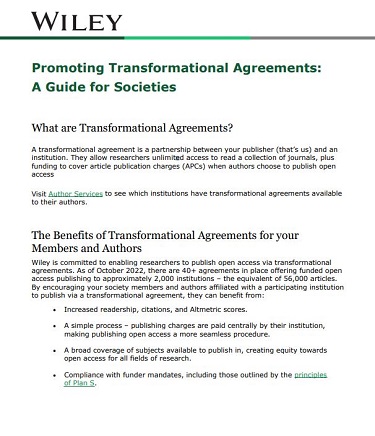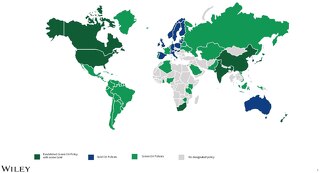continuous-improvement-in-publishing-spotlight-on-new-journal-design
July 21, 2021
The “new normal” of 2020 showed us that there are still plenty of ways to make publishing work better, for everyone - that’s why we are committed to a culture of continuous improvement in our publishing.
The rapid changes we all experienced in 2020 highlighted the importance of meeting researchers’ needs and being able to adapt more quickly to new expectations, work environments, and technology improvements.
Last year we introduced a program of initiatives that reflect a dedication to continuous improvement. With the program, we embed a culture of modernization and technological advancement and commit to being at the forefront of change. Our culture challenges old and inefficient ways of working, and brings improvements for our products, processes, and (most importantly) our customers.
Technology allows us to rethink our processes and become digital-first. As we are no longer limited by print, we can not only digitize existing workflow elements but embrace new cutting-edge digital methods.
The latest update to our New Journal Design (NJD) highlights how we listen and respond to feedback from authors, editors, and society partners. NJD harmonizes layouts and copyediting guidelines across our journals, with the ultimate goal of making research available in as timely a manner as possible by improving publication speed and efficiency. In response to feedback from our customers, the latest version combines the benefits of clearly delineated standards with the enhanced flexibility that our stakeholders asked for. This allows us to provide:
- more choice for layout and content treatment;
- more flexibility within journal layouts;
- more clarity on key differences;
whilst still achieving the benefits that a standardized approach provides.

Our updated NJD format has been praised for its ‘modern’, ‘fresh’, and ‘clean’ feel. In a recent editorial published by The Wildlife Society in The Journal of Wildlife Management, the editors explained that NJD and other previous changes they had implemented ‘all improved the delivery of scientific information by TWS and enhanced the standing of our journals in the scientific community. Our goal is to institute new changes to accomplish the same by improving readability online, generating more interest by readers, and giving TWS journals a contemporary look’. NJD allows editors to be prepared for future technologies and aligns the journal with modern user needs.
These are just a couple of the improvements we are making to regularly improve our service to our customers. Keep your eyes peeled for some of our other activities which you may have already heard about or are making use of:
- HTML Online Proofing System
- Right-fit copyediting
- Improved article transfers for authors
- New author submission platform: Research Exchange
If you are interested in finding out about any of the initiatives we have mentioned above, speak to your Wiley Journal Manager for more information.











